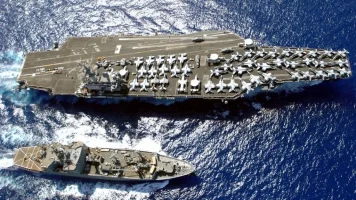- Views: 1K
- Replies: 2

India's successful test of its first long-range hypersonic missile on Saturday marks a significant advancement in its defence capabilities and places it among a select group of nations, including China, Russia, and the United States, that have mastered this cutting-edge technology. Hypersonic weapons, traveling at speeds greater than Mach 5, are revolutionizing modern warfare with their ability to evade conventional defenses and strike with precision.
India's hypersonic weapon program, led by the Defence Research and Development Organisation (DRDO), has already achieved significant milestones. In 2020, DRDO successfully tested the Hypersonic Technology Demonstrator Vehicle (HSTDV), a scramjet-powered vehicle designed to validate technologies for hypersonic cruise missiles. This test demonstrated India's capability to develop hypersonic technology.
Building on the HSTDV's success, India plans to develop a fully operational hypersonic cruise missile by the mid-2030s. This system will likely utilize advanced scramjet technology, offering extended range and improved strike capabilities. India is also reportedly working on a hypersonic glide vehicle that will be integrated with its existing ballistic missile platforms, providing a maneuverable, precision-strike capability against high-value targets.
These advancements in hypersonic technology offer India the ability to strike targets with unparalleled speed and precision, reducing reaction times for adversaries and bolstering its deterrence posture, particularly against regional rivals like China and Pakistan, both of which are actively pursuing their own hypersonic programs.
India's hypersonic weapons will not only serve as potential nuclear delivery systems but also enhance conventional strike options. These weapons could be used for pre-emptive strikes on critical enemy infrastructure, such as command centers or air defence networks, without the risk of interception.
By joining the ranks of hypersonic-capable nations, India signals its technological maturity and defence self-reliance on the global stage. This capability will strengthen India's position in international forums and defence collaborations.
India's hypersonic development timeline suggests that operational systems may be ready by the 2030s. With the HSTDV as a foundation, DRDO is likely to focus on refining scramjet engines, enhancing maneuverability, and integrating hypersonic systems into its defence ecosystem. This commitment to hypersonic technology underscores India's determination to maintain a cutting-edge military and secure its strategic interests in a rapidly evolving global security landscape.




